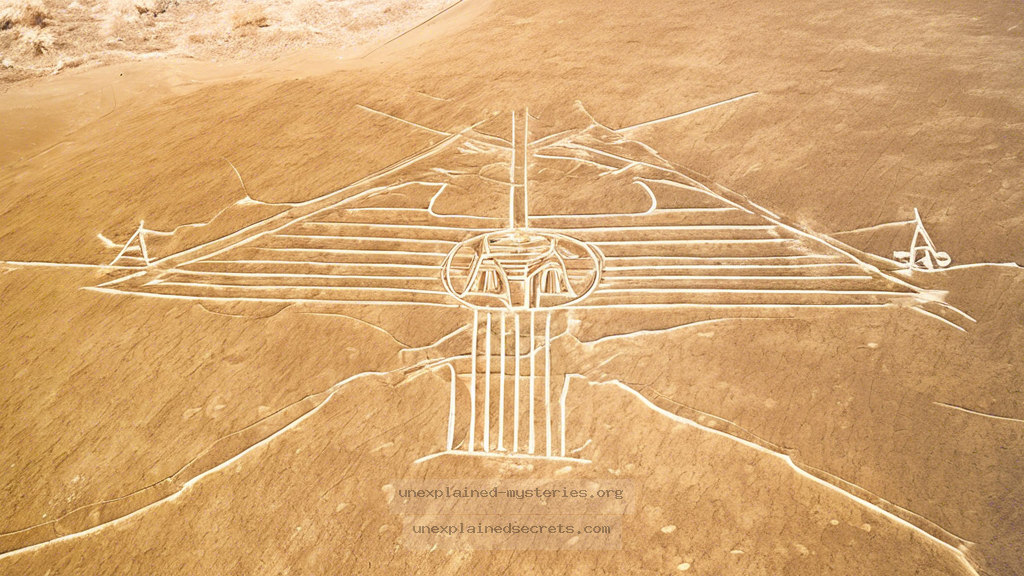What Secrets Do the Nazca Lines Hold That Continue to Baffle Researchers?
What Secrets Do the Nazca Lines Hold That Continue to Baffle Researchers?
The Nazca Lines, etched into the arid plains of southern Peru, represent one of the most enigmatic ancient mysteries of our time. Spanning several hundred square kilometers, these geoglyphs depict various figures, including animals, plants, and geometric shapes, and remain largely unexplained. Their purpose, method of creation, and the cultures behind them have perplexed scholars, archaeologists, and enthusiasts alike. Understanding the Nazca Lines is crucial not only for comprehending ancient Peru’s cultures but also for grasping the broader implications of human ingenuity and the mysteries that lie in our past. In this post, we delve into various aspects of the Nazca Lines, exploring their historical context, theories surrounding their creation, and the ongoing research efforts to uncover their secrets.
Historical Context of the Nazca Lines
The Nazca Lines were created by the Nazca culture between 500 BCE and 500 CE, a time when the region was characterized by a complex society that engaged in agriculture, trade, and religious practices. This civilization thrived in a desert environment, utilizing advanced irrigation techniques to cultivate crops like cotton, maize, and beans. The Nazca people left behind a wealth of artifacts, including pottery and textiles, but the lines themselves have remained one of their most enduring legacies.
The first recorded mention of the Nazca Lines occurred in the 1920s when commercial flights revealed their vast scale and intricate designs. The lines can be categorized into three main types: geometric shapes, biomorphic figures, and straight lines. The largest of these figures stretches up to 1,200 feet across, emphasizing the sheer magnitude of this ancient endeavor. But what motivated the Nazca people to create such grand designs on the earth’s surface?
Theories on the Purpose of the Nazca Lines
Over the years, numerous theories have emerged regarding the purpose of the Nazca Lines. Some of the most prominent include:
- Religious Significance: One of the prevailing theories posits that the lines served as pathways for ceremonial rituals, possibly linked to water and agriculture, which were vital for survival in the arid environment.
- Astronomical Alignments: Some researchers suggest that the lines correspond to celestial bodies, functioning as an ancient astronomical calendar that could help in predicting seasonal changes.
- Geometric Patterns for Rituals: Another theory posits that the complex geometric shapes were used in rituals or as a form of art, meant to be appreciated from the sky, possibly by deities.
The ongoing debate surrounding these theories only adds to the mystique of the Nazca Lines. While some researchers advocate for a singular purpose, others argue that a combination of factors may have influenced their creation.
Method of Creation: How Were the Nazca Lines Made?
Creating the Nazca Lines required significant labor and ingenuity. Researchers believe the Nazca people utilized simple yet effective techniques to remove the top layer of reddish-brown iron oxide pebbles, revealing the lighter-colored ground beneath. This technique, however, required careful planning and an understanding of geography and astronomy.
Evidence suggests that the Nazca people used basic tools and possibly even ropes to ensure straight lines and proportional designs. The precision of the lines raises questions about their methods, and while some modern theories suggest that they may have employed the concept of a “ground plan” using simple geometry, the exact techniques remain largely speculative.
Practical Implications: The Nazca Lines Today
The Nazca Lines have garnered significant attention from tourists, researchers, and conservationists. The impact of tourism is both a boon and a challenge. While it brings in revenue and raises awareness, the lines are also at risk from human activity, including vandalism and environmental degradation. Conservation efforts are essential to protect this UNESCO World Heritage Site, and ongoing research continues to explore how to best preserve these ancient wonders.
Researchers are utilizing advanced technologies, such as aerial photography and satellite imagery, to document the lines more accurately and to monitor any changes over time. These technologies have opened new avenues for understanding the scale and significance of the Nazca Lines.
Alternative Perspectives: Theories Beyond Mainstream Thought
While many theories focus on religious or astronomical purposes, alternative perspectives also exist. Some propose that the lines were created as a form of social cohesion, a way for the Nazca people to unite around shared beliefs or practices. Others view the geoglyphs as markers of territorial boundaries or as indicators of resource locations.
In recent years, some researchers have even speculated that the Nazca Lines may have ties to other ancient civilizations, suggesting that they were a part of a wider network of communication or trade. Such theories challenge the notion that the Nazca culture existed in isolation and invite a broader discussion about cultural exchange in ancient times.
Debunking Myths: Clarifications on the Nazca Lines
Several myths have circulated regarding the Nazca Lines, often fueled by sensationalized accounts. One common myth suggests that the geoglyphs were created by extraterrestrial beings. While such theories can be entertaining, they detract from the rich cultural heritage of the Nazca people. Archaeological evidence supports the idea that the lines were a product of human ingenuity and creativity.
Another misconception is that the lines are disappearing or have been significantly altered over time. While some erosion and environmental factors have impacted their visibility, many of the lines remain well-preserved, thanks to the dry climate of the Nazca region.
Investigative Approaches: Best Practices for Study and Research
Researchers and enthusiasts interested in studying the Nazca Lines can adopt several best practices to ensure a thorough and respectful investigation. These include:
- Utilizing Technology: Employing drones and satellite imagery can provide new insights and help document the lines without causing damage.
- Engaging with Local Communities: Collaborating with local historians and the descendants of the Nazca people can offer valuable perspectives and foster a sense of stewardship.
- Promoting Conservation: Advocating for the preservation of the lines through responsible tourism and awareness campaigns is crucial for their longevity.
Future Developments: Ongoing Research and Discoveries
As technology advances, so too does our understanding of the Nazca Lines. Researchers are continually discovering new geoglyphs, some of which remain undocumented. The application of artificial intelligence in analyzing aerial images has opened up new possibilities for identifying patterns and connections among the lines.
Future research may also delve into the environmental and social contexts of the Nazca culture, shedding light on how the lines fit into broader cultural practices and their significance in ancient Peruvian society. Moreover, interdisciplinary approaches that combine archaeology, anthropology, and environmental science are likely to yield richer insights into the mysteries surrounding the Nazca Lines.
Conclusion: The Enduring Mystery of the Nazca Lines
The Nazca Lines continue to captivate our imaginations and challenge our understanding of ancient civilizations. From their possible religious and astronomical significance to the methods of their creation, the lines represent a complex interplay of culture, environment, and human innovation. As ongoing research sheds light on these ancient geoglyphs, we are reminded of the importance of preserving such cultural heritage for future generations. The mystery of the Nazca Lines may never be fully resolved, but they will undoubtedly remain a source of intrigue and inspiration for years to come.
Other Articles
Recent Posts
- What Happened to Flight MH370? The Conspiracy Theories That Still Haunt Us
- What Secrets Lurk Within the Walls of the Infamous Trans-Allegheny Lunatic Asylum?
- What Evidence Supports the Existence of Bigfoot in the Pacific Northwest?
- What Happened to the Indus Valley Civilization? Unraveling the Mysteries of Ancient Urban Life
- Can Telepathy Be Scientifically Proven Through Laboratory Evidence?







